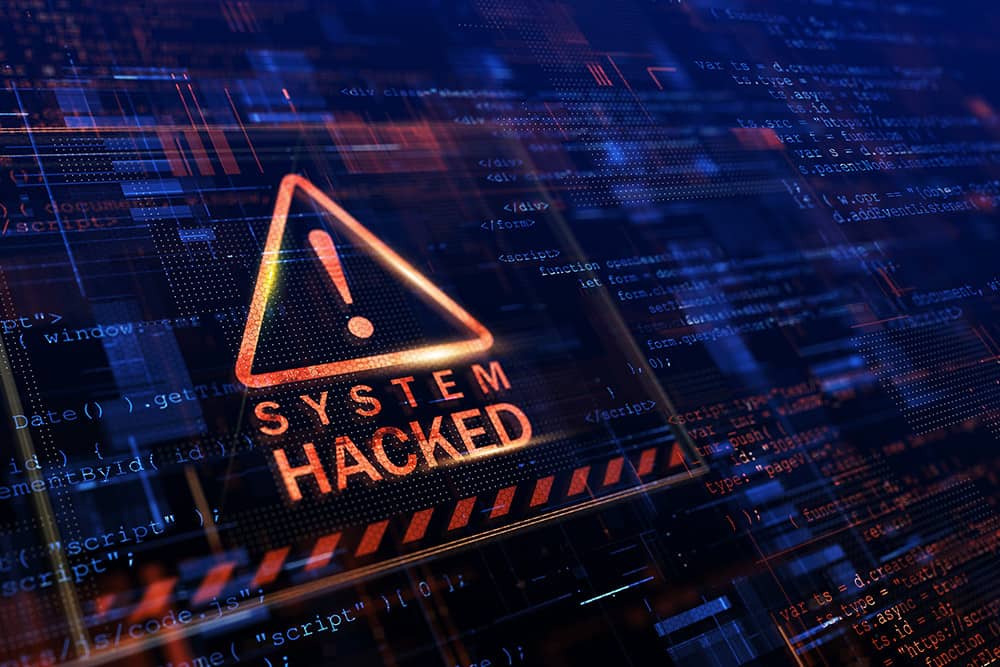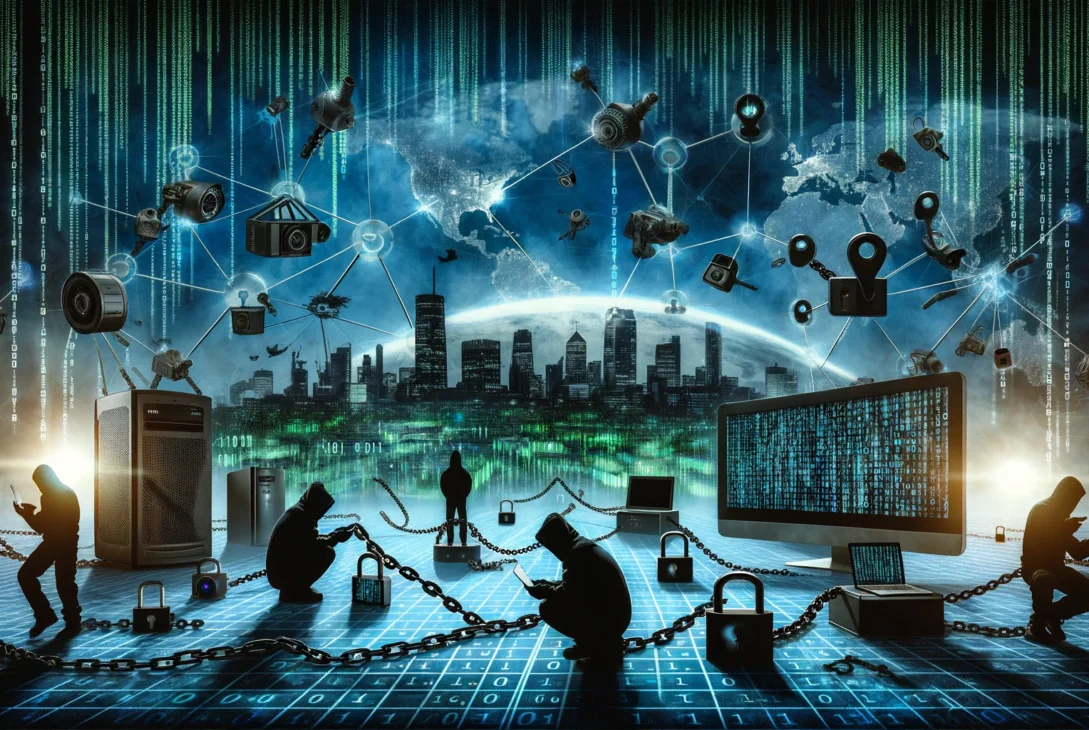Explore the depths of the Mirai Botnet Attack of 2016, a cybersecurity event that shook the digital world by exploiting IoT devices to launch unprecedented DDoS attacks. This comprehensive article delves into the origins, impacts, and the global response to one of the most significant cyber threats of recent times, highlighting the evolving nature of cyber risks and the critical lessons learned for a more secure digital future.
The Mirai Botnet Attack of 2016 marked a watershed moment in the history of cyber-attacks, shedding light on the growing vulnerability of the Internet of Things (IoT) devices and the potential for these devices to be exploited for massive distributed denial-of-service (DDoS) attacks. This unprecedented attack not only disrupted the operations of major websites but also raised serious questions about the security of connected devices and the invisible threats lurking within the digital landscape. The identity and motives of the attackers behind the Mirai botnet have remained a topic of speculation and investigation, with theories ranging from the involvement of state actors to lone hackers seeking to demonstrate their prowess or exploit the internet’s vulnerabilities for personal gain.
The Dawn of the Mirai Botnet
In late 2016, the digital world witnessed one of the most significant cyber-attacks in history. The Mirai botnet, a network of compromised IoT devices, launched a series of DDoS attacks that overwhelmed and temporarily shut down the services of major internet platforms, including Twitter, Spotify, and Netflix, among others. This attack was notable not only for its scale but also for its methodology. Mirai exploited the weak security of IoT devices—such as cameras, routers, and DVRs—by infecting them with malware that enabled the attackers to control a vast army of these devices remotely.
The botnet targeted the Domain Name System (DNS) provider Dyn, a company responsible for translating internet domain names into IP addresses. By flooding Dyn’s servers with an overwhelming amount of traffic, the Mirai botnet effectively made it impossible for users to access websites serviced by Dyn. This method of attack highlighted a critical vulnerability in the infrastructure of the internet: the reliance on key nodes that, if incapacitated, could disrupt access to a wide swath of the internet.
Investigating the Origins
In the aftermath of the attack, cybersecurity experts and law enforcement agencies around the world launched investigations to uncover the origins of the Mirai botnet and the identity of its creators. The forensic analysis revealed that the malware exploited default usernames and passwords to infect devices, a tactic that underscored the often-neglected aspect of IoT security: the simplicity and predictability of device credentials.
Despite the concerted efforts to track down the perpetrators, the investigation faced numerous challenges. The decentralized nature of the botnet, combined with the use of common vulnerabilities across a wide range of devices, made it difficult to pinpoint the attack’s origins. The attackers’ motives remained just as elusive, with theories ranging from financial gain to political motivations or even a demonstration of power and technical ability.
Theories and Speculations
The anonymity and scale of the Mirai botnet attack fueled speculation about the possible involvement of state actors. Some experts suggested that only a government-backed group would have the resources and motivation to carry out an attack of such magnitude, potentially as a means of testing cyber warfare capabilities or sending a geopolitical message. However, the lack of direct evidence linking any nation-state to the attack, coupled with the relatively unsophisticated nature of exploiting default passwords, cast doubt on this theory.
Another prevailing theory was that the attack could have been the work of a lone hacker or a small group of individuals seeking notoriety or attempting to highlight the glaring security flaws in IoT devices. This theory was supported by the public release of the Mirai source code on hacker forums, which some interpreted as an attempt to diffuse responsibility and avoid detection.

Image taken from Human Focus.
The Impact on IoT Security
The Mirai botnet attack served as a stark wake-up call to the industry, highlighting the urgent need for improved security measures in IoT devices. It exposed the dangers of neglecting security in the rush to connect an ever-growing number of devices to the internet. Manufacturers, consumers, and regulatory bodies were forced to confront the reality that the convenience offered by IoT technology came with significant risks.
In response to the attack, there was a push for stronger security standards for IoT devices, including the implementation of more robust authentication methods, the ability to easily update devices with security patches, and the importance of educating consumers about the risks associated with IoT devices. The attack also spurred discussions about the responsibility of device manufacturers in ensuring the security of their products, as well as the role of government regulation in enforcing security standards.
The Mirai botnet attack of 2016 was a defining moment in the evolution of cyber threats, illustrating the potent combination of sophisticated hacking techniques and the inherent vulnerabilities of connected devices. As the investigation into the attack continued, the global community was left to grapple with the implications of this new form of cyber warfare and the realization that the devices designed to make life easier could also be turned into weapons of digital disruption.
Global Response and Countermeasures
The immediate aftermath of the Mirai attack saw a frenzied global response aimed at mitigating the damage and preventing future incidents of similar magnitude. Cybersecurity firms, internet service providers, and device manufacturers scrambled to address the vulnerabilities exploited by Mirai, leading to a widespread reassessment of IoT device security. Governments and international organizations began to draft guidelines and regulations aimed at bolstering the security of connected devices. This regulatory push aimed to ensure that manufacturers implemented security-by-design principles, making devices harder to compromise.
Simultaneously, the cybersecurity community intensified its efforts to develop more robust defense mechanisms against DDoS attacks.
This included the enhancement of threat detection systems, the deployment of more sophisticated network infrastructure capable of absorbing or deflecting massive amounts of traffic, and the establishment of collaborative platforms for sharing threat intelligence.
Evolving Threat Landscape
The Mirai Botnet Attack underscored the evolving nature of cyber threats, highlighting how attackers exploit new technologies and the interconnectedness of devices. In the wake of Mirai, there was a significant increase in the number and sophistication of IoT-based attacks. Attackers, inspired by the success of Mirai, created new variants of the botnet, each exploiting different vulnerabilities and targeting different types of devices. This ongoing evolution of threat vectors prompted a continuous arms race between cybercriminals and cybersecurity defenders, with each side continually adapting to the tactics of the other.
Industry and Consumer Shifts
The attack prompted a significant shift in how both the industry and consumers perceive the security of IoT devices. Manufacturers, previously criticized for prioritizing convenience and cost over security, began to integrate more robust security features into their products. This shift was partly driven by consumer demand for safer devices, as awareness of cybersecurity issues grew. Consumers became more cautious about the smart devices they brought into their homes, often seeking products that offered clear security guarantees.
Moreover, the incident led to a greater emphasis on the importance of regular software updates and the role they play in keeping devices secure. Both consumers and manufacturers recognized the necessity of keeping firmware up to date as a critical defense against potential attacks.
The Ongoing Challenge of Cybersecurity
Despite the concerted efforts to mitigate the risks associated with IoT devices, the challenge of ensuring cybersecurity in an increasingly connected world remains daunting. The sheer volume of devices, combined with varying levels of security awareness among users and manufacturers, creates a landscape ripe for exploitation. The Mirai Botnet Attack served as a reminder of the continuous need for vigilance, innovation, and collaboration in the fight against cyber threats.
Efforts to enhance IoT security are ongoing, with advancements in encryption, authentication, and network security playing a crucial role. Additionally, the development of artificial intelligence and machine learning technologies offers promising avenues for detecting and responding to cyber threats more effectively. However, the pace of technological innovation means that cybersecurity strategies must constantly evolve to address new vulnerabilities.
Conclusion
The Mirai Botnet Attack of 2016 was a seminal event in the history of cybersecurity, marking a moment of collective realization about the vulnerabilities inherent in the burgeoning IoT landscape. It underscored the importance of cybersecurity as a foundational element of technological development and digital connectivity. The attack spurred a global reckoning with the security of the internet’s infrastructure, leading to significant advancements in cybersecurity practices and policies.
As we look to the future, the lessons learned from the Mirai attack remain relevant. The incident serves as a stark reminder of the potential consequences of neglecting cybersecurity and the importance of preparing for the unforeseen. By fostering a culture of security that prioritizes the protection of digital assets and infrastructure, we can hope to mitigate the risks posed by future cyber threats. The Mirai Botnet Attack, while a disruptive and challenging event, ultimately contributed to a stronger, more resilient digital world.




